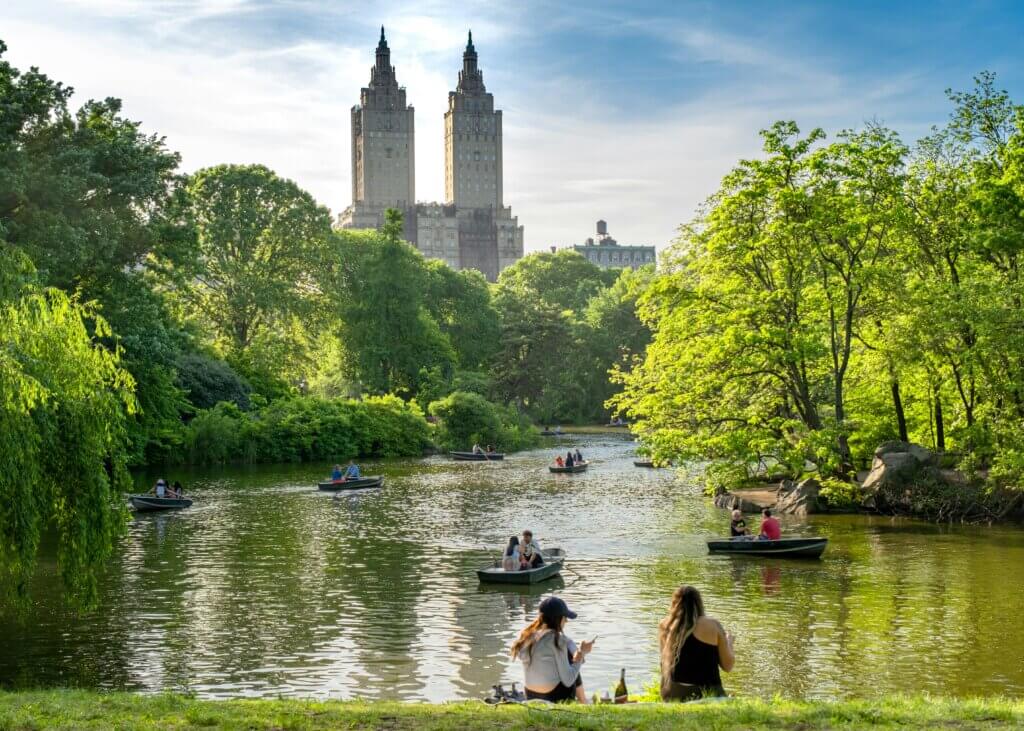As our concrete jungles expand, could we be sacrificing more than just trees and meadows? According to compelling new research, lack of urban greenery may take a toll on residents’ mental health too.
In a first-of-its kind study published in the International Journal of Environmental Research and Public Health, scientists at Texas A&M University found people had over 50% fewer doctor’s visits for common mental health issues when living in the greenest city pockets.
The findings highlight nature’s nourishing role for our psyche and suggest city planners should make inner-city oases a priority.

Rating Urban Oases
There are plenty of journal articles that show how being in nature promotes mental wellbeing, but most studies use limited measures of exposure. So the Texas A&M team created an urban greenness scoring index called “NatureScore” that integrates diverse metrics like pollution levels, tree densities, and accessibility of parks into a single neighborhood grade. Focusing on Texas, they then matched doctors’ visits coded for anxiety, depression and other mood issues to residents’ NatureScores.
Of over 60 million mental health encounters analyzed statewide, roughly half occurred in areas with the two highest NatureScore ratings of “Nature Rich” and “Nature Utopia”. Yet per capita visit rates here were 50% lower than in the most nature-deprived zones.
“We found that a NatureScore above 40 — considered Nature Adequate — seems to be the threshold for good mental health,” said study co-author Dr. Jay Maddock, an environmental and occupational health expert at the university’s Center for Health and Nature. “People in these neighborhoods have a 51 percent lower likelihood of developing depression and a 63 percent lower likelihood for developing bipolar disorders.”

Why Greener is Happier
But why should verdant landscapes impart mental health advantages? There are clues in patterns revealed.
Preexisting mental health issues didn’t predispose people to seek out greener pastures; the researchers accounted for this. And richer income areas weren’t necessarily more nature-blessed. In fact, lower-income urban communities tended to be more nature-deprived.
Instead, an abundance of nature itself seems to directly buffet against mood problems. Nearby trees, parks and less-developed spaces likely reduce stress, encourage physical activity and foster meaningful social connections for city dwellers.
Indeed, prior experiments using virtual reality to mimic green spaces have shown nature’s relaxing influence. Studies also confirm exercising outdoors enhances well-being over indoor fitness regimes. Moreover, past Texas A&M research demonstrates that more natural neighborhoods promote social cohesion.
Urban Jungles at a Crossroads
Urban migration is accelerating worldwide, with close to 70% of people projected to live in cities by 2050. Yet urban planning has historically sidelined nature. What green spaces cities retain are unequally distributed by socioeconomic status.
“Increasing green space in cities could promote well-being and mental health, which is critically important given that more than 22 percent of the adult population in the United States with a mental health disorder,” said the study’s lead author, Omar M. Makram.
The good news is that verdant city blocks are a win-win investment that yields both ecological and mental health dividends. As cities expand outwards, the NatureScore research propels a paradigm shift in urban planning ethics.

Leaders should consider how architectural designs impact residents’ psychological well-being alongside sustainability moving forward. Lush parks and tree-lined neighborhoods should be a key inclusion with city plans.
Singapore’s Bedok district offers inspiration. Vibrant vertical gardens cool highways as sky parks, hydroponic rooftop farms and abundant public greenspaces give the area an almost science-fictional eco-city vibe. And residents reap nature’s mental health benefits.
Thanks to the Texas A&M team, leaders and researchers can now turn to the NatureScore scale to help them better evaluate urban green spaces. “This study establishes the foundations for future research into the use of NatureScore as an all-encompassing measure of nature exposure and its impact on various health outcomes,” the authors write. “Overall, our findings highlight the importance of incorporating nature into our built environment and healthcare strategies to promote well-being and mental health.”












